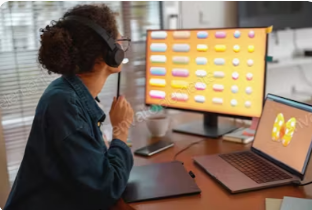In today’s digital age, remote work, flexible schedules, and the need for secure and scalable IT solutions have become more prevalent than ever. One technology that has gained significant attention in this landscape is virtual desktop infrastructure (VDI), also known as virtual desktops. So, what exactly is a virtual desktop and how can it revolutionize the way we work?
A virtual desktop is a desktop operating system, such as Windows or Linux, hosted and managed in a data center or cloud environment rather than on a physical device. This means that instead of relying on traditional desktop PCs or laptops, users access their desktop environment virtually through a remote connection over the internet.
One of the key advantages of virtual desktops is the flexibility and mobility they offer. Users can access their personalized desktop environment from any device, anywhere in the world, as long as they have an internet connection. This capability enables remote work, BYOD (Bring Your Own Device) policies, and seamless collaboration across geographically dispersed teams.
Moreover, virtual desktops enhance data security and compliance by centralizing data storage and processing in a secure data center or cloud environment. This centralized approach reduces the risk of data loss or breaches caused by lost or stolen devices, as sensitive data remains secure within the data center.
Additionally, virtual desktops facilitate efficient IT management and resource allocation. IT administrators can easily deploy, update, and manage virtual desktops from a centralized console, ensuring uniformity, compliance, and streamlined maintenance across the organization.
Virtual desktops offer a futuristic approach to workplace computing, combining flexibility, security, and scalability to meet the evolving needs of modern businesses. By embracing virtual desktop infrastructure, organizations can unlock a world of opportunities for productivity, collaboration, and innovation in the digital era.
